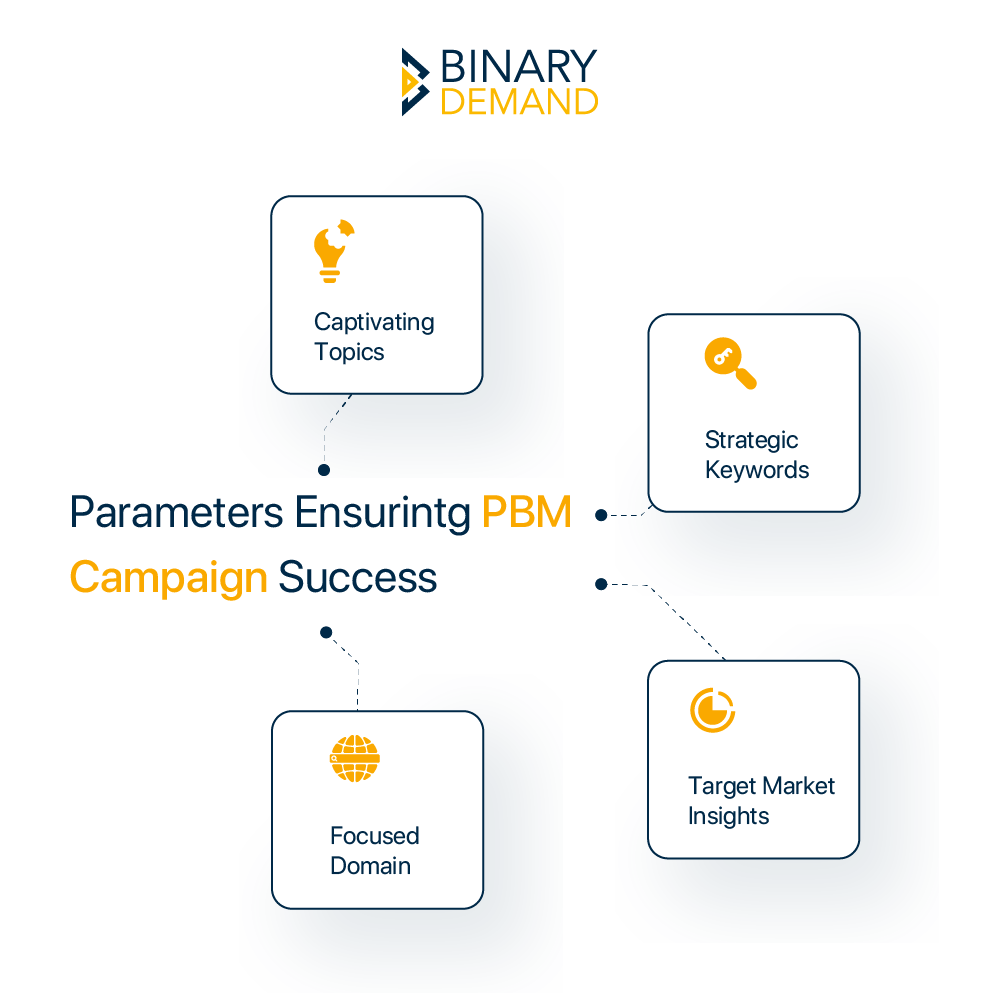
B2B marketing has undergone substantial change in the frantic and fiercely competitive commercial environment. Due to technological development and the growing emphasis on personalization, organizations can now connect stronger with the target audience.
B2B people-based marketing campaigns have witnessed enormous growth among the marketing channels. We will explore the idea of a B2B PBM campaign, comprehend its significance, and analyze how it can revolutionize your marketing initiatives.
Understanding B2B People-based Marketing Campaigns
B2B people-based marketing campaigns focus on identifying and targeting specific individuals within an organization rather than focusing solely on accounts or generic audience segments. It involves leveraging data-driven insights to comprehensively understand individual decision-makers, their preferences, and their purchasing behavior, thus enhancing your B2B demand generation solutions.
By recognizing the unique characteristics of each person, B2B marketers can tailor their messaging and content to resonate with their specific needs and pain points.
Now that we have acknowledged the gist of PBM campaigns, the role of personalization that improves the campaigns comes next.
Personalization: A Catalyst to B2B PBM Campaigns
Personalization lies at the heart of a B2B people-based marketing campaign. Businesses can establish meaningful connections with key decision-makers by delivering highly targeted and relevant messages. This level of personalization fosters trust, increases engagement, and drives better conversion rates.
Also Read: A Successful B2B People-Based Marketing Strategy: Tips and Best Practices
Whether through personalized email campaigns, account-based advertising, or custom landing pages, B2B people-based marketing campaigns empower marketers to slay the hurdles and make a lasting impact on the target audience.
After understanding the role of personalization, let’s consider the optimum utilization of data facilitating particular targeting.
Leveraging Data for Precision Targeting
Robust data and analytics capabilities are crucial to executing successful B2B people-based marketing. Marketers can garner valuable insights about their audience by tapping into various data sources, such as CRM systems, marketing automation platforms, and third-party data providers.
This data can include job titles, industry-specific insights, online behaviors, and previous interactions with the brand. With this data, marketers can create highly segmented audience profiles and craft hyper-personalized campaigns that deliver maximum impact.
Apart from harnessing data, it becomes essential to note the channels for campaign execution. Generally, reaching an audience via multiple channels creates a greater impact, instead of relying on a handful of options.
Multi-channel Approach
People-based marketing campaigns are not limited to a single marketing channel. Instead, they embrace a multi-channel approach to reach a wider pool of decision-makers. This could involve a combination of B2B email marketing, social media advertising, content marketing, and even offline channels such as direct mail.
By orchestrating a seamless and integrated experience across multiple touchpoints, B2B marketers can capture their audience’s attention and guide them more effectively through the buyer’s journey.
After learning about fetching numerous accounts via a wider approach, let’s surf through the next part of the content that presents factors contributing to the overall triumph of PBM campaigns.
Ensuring the Success of People-based Marketing Campaigns
The success of people-based marketing campaigns relies on the proper execution of the following parameters:

1) Content Topic
Selecting the subject for your pillar page is the first step in developing a successful PBM campaign. A pillar page will be required for each pillar strategy at the top of the plan’s hierarchy. It is typically a 3,000-word-plus piece of content that serves as your website’s primary navigation page.
With the help of consumer insights, you can comprehend what your target audience is seeking, and accordingly, you can serve their aid with your pillar content.
2) Choice of Keywords
Choosing high-ranking keywords and subjects for the content you will post is the second crucial phase in the B2B people-based marketing process. It is ideal to pick search terms and queries your intended audience uses. To develop content like this, you must be able to undertake in-depth market and customer research.
Moreover, suitable keyword research tools can help you garner the queries and phrases that must be incorporated in all types of content, be it a pillar, sub-pillar, or supporting blog. These suggestions are more likely to enhance the chances of ranking.
3) Content Domain
The next stage is to compose engaging content with all your topics and keyword phrases. Imagine the entire body of information on a particular subject as a giant spider web, with each blog linking to a sub-pillar and each sub-pillar linking back to the main website.
This web of insights and information tells Google that you are a subject expert on a particular subject, which will improve your search engine rankings and move you up to the first page of results.
After the content is carved, you can publish everything at once or in batches to coincide with other projects your team is working on. In either case, your content will reach your target audience and boost organic lead generation if you offer most of the appropriate services while plotting your people-based marketing campaigns.
4) Market and Customer Research
An outstanding B2B people-based marketing campaign begins with high-quality research like B2B account-based marketing. However, the objective is to connect with and appeal to a larger—yet still refined and targeted—audience rather than finding and serving that “industry-dominating” client.
As a part of the research, you can spot and analyze several concerns and sub-topics based on search data. It’s essential to know what questions people are raising and where they are trying to seek B2B data solutions. Besides, you can try comprehending the keywords your prime competitors are using and what level of response they are fetching.
In addition to these essential success-contributing criteria, it has been observed that incorporating digitization has revolutionized campaigning efforts. Let’s explore how the sync with programmatic tools can bolster the output of PBM campaigns.
Programmatic Integration in PBM Campaigns
Programmatic tools leverage advanced algorithms and data-driven automation to target and engage specific individuals across various digital channels precisely. These platforms enable effective audience segmentation, dynamic ad placements, and efficient budget management, improving campaign performance and higher conversion rates.
Also Read: Mastering the Art of B2B Marketing: Effective Strategies for Business Growth
The channels your team employs can be more transparent due to programmatic solutions. They recognize deeper insights than standard analytics, allowing you to analyze how customers use your website and the content that creates a lasting impact. This makes it feasible to target customers effectively and intuitively.
Programmatic solutions will eventually start emphasizing audiences than just pixels and cookies. By offering insights in line with customers’ needs, wants, and interests, you can positively influence prospects’ perception of marketing.
After comprehending the role of digitalization, the next segment will uncover the major benefits of people-based marketing campaigns.
Advantages of B2B People-based Marketing Campaigns
The remarkable benefits of PBM campaigns that bring fruition to the marketing efforts are as follows:

1) Accessing Detailed Customer Profiles
Implementing a people-based marketing campaign allows businesses to gather comprehensive customer data, creating more detailed customer profiles.
Companies gain a deeper understanding of individual customers by leveraging demographic data, browsing behavior, purchase history, and social media interactions.
These enriched profiles facilitate B2B people-based marketing strategies, tailored product recommendations, and targeted communication, improving customer engagement and higher conversion rates.
2) Eliminating the Guesswork Out of Marketing and Sales
PBM campaigns offer the advantage of discarding redundant predictions from sales and marketing. By focusing on individuals rather than broad demographics, these campaigns enable marketers to deliver personalized and relevant messages to their target audience.
This approach enhances targeting accuracy, ensures better alignment between marketing efforts and customer needs, and increases the likelihood of driving meaningful engagement, conversions, and sales. With data-driven insights, marketers can make informed decisions, optimize their campaigns, and achieve a better ROI.
3) Reaching the Most Appropriate Business Personnel
Among other people-based marketing benefits, accurately identifying and targeting the most suitable individual within an organization is extremely helpful. By leveraging data and technology, marketers can analyze various parameters such as job roles, responsibilities, decision-making authority, and purchasing power to determine the ideal person to engage with.
This targeted approach ensures that marketing messages reach the right individual, increasing the chances of meaningful interactions, effective communication, and, ultimately, higher conversion rates. Overall, identifying the most appropriate person within a company enhances the efficiency and effectiveness of the marketing campaign.
Conclusion
People-based marketing campaigns have emerged as a game-changer for businesses seeking to engage their target audience in a personalized and meaningful way.
By leveraging data, personalization, and a multi-channel approach, marketers can unlock the true potential of their campaigns, driving higher engagement, better conversion rates, and, ultimately, long-term customer retention. As B2B marketing continues to evolve, don’t wait any longer! Take the leap and connect with Binary Demand today to unlock the incredible opportunities of People-based marketing campaigns. Witness your business soar to new heights and achieve unprecedented success!





